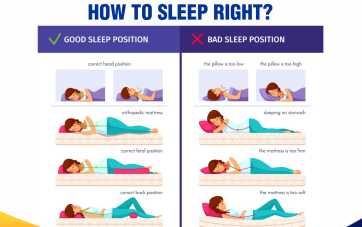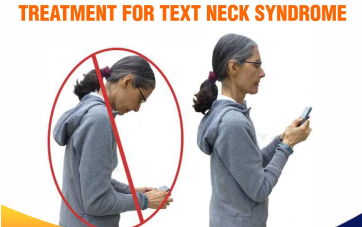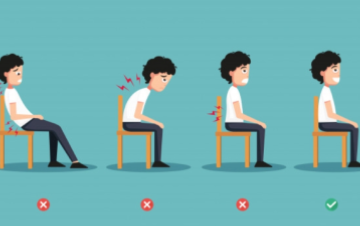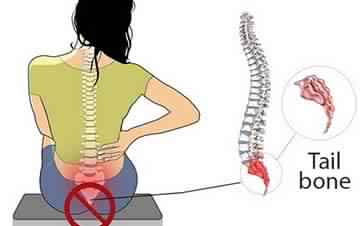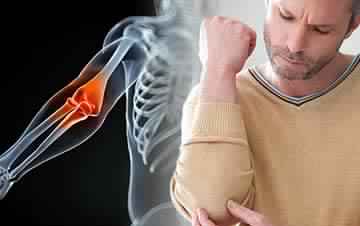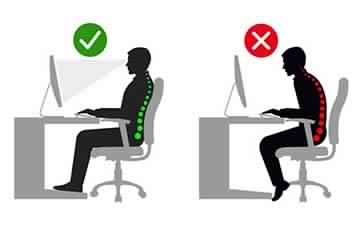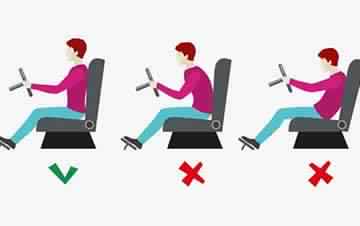POSTURE ASSESSMENT & MODIFICATIONS
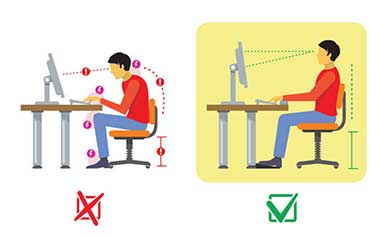
In majority of musculoskeletal problems specifically neck pain/ back pain, Abnormal posture is the root cause of all problems. At Dr. Sanjeev’s Pain Clinic, we evaluate posture of patients and identify abnormal posture and correct it.
• Sitting Posture
A lot of people suffer from ill effects of bad sitting posture. Pain is the first symptom of a musculoskeletal problem. The right sitting posture is extremely important. In case you do not sit properly over an extended period of time, it can lead to problems such as upper or lower back pain, neck pain, body aches, fatigue, arm pain, muscle spasm, etc. Some of the symptoms of poor sitting posture are mentioned below:
• Slouching.
• Hunchback.
• Rounded shoulders.
• Head tilted forward.
At Dr. Sanjeev’s Pain Clinic a combination of different exercises and medication is recommended to the patient in order to correct the sitting posture. These exercises strengthen the core and buttock muscles. They enable us to correct the slouching posture. The right posture minimizes the chances of injury and helps treat the problem.
Things which lead to bad sitting posture are:
• Injury.
• Stress.
• Heredity.
• Muscle Weakness and Tension.
• Technology (Mobile phones, gadgets, gaming, etc).
Treatment for bad sitting posture:
Physiotherapy Treatment is offered at Dr. Sanjeev’s Pain Clinic to treat the poor sitting posture. A holistic approach is followed so that the patient receives the maximum benefit from the treatment and it leads to overall well-being. The treatment includes processes such as joint mobilization, manual therapy and soft tissue massage, corrective exercises to enhance flexibility and build strength, Activity modification advice, electrotherapy, etc. Patients with wrong sitting posture are given advice with reference to ergonomic work stations. Pilates exercise sessions are also provided to ease the pressure on muscles.
Apart from these procedures, pain relievers are recommended to offer symptomatic relief of the problem. Only in very severe cases is the patient recommended any kind of surgery. Treatment varies in accordance with the level of problem that a patient is facing.
• Standing Posture
With age, the risk of developing musculoskeletal diseases amplifies. The bones, muscles and joints deteriorate naturally as we grow old. Apart from this if we have poor standing posture the problem becomes worse. This is the reason why it is recommended that you take stand correctly throughout your adulthood so that the problem does not become worse as you grow.
It is extremely vital to build up healthy lifestyle habits. At Dr. Sanjeev’s Pain Clinic regular exercises and stretching are recommended as it makes the muscles and bones in the body strong. It is vital to carry out everyday activities in a safe manner. Maintain a tall posture as it prevents back pain. Also, be extra careful when you are lifting heavy objects. Repetitive motions should be kept to the minimum.
When we stand, sit or lie in a bad posture for an extended length of time, it puts a lot of stress on the muscles, joints and ligaments. The first symptom of poor standing posture is pain and damage, for instance, you can have pain in the back, neck or even shoulder. Bad standing posture worsens MS symptoms. Mentioned below are some of the activities that can lead to wear and tear on your musculoskeletal system, leading to severe musculoskeletal disorders such as osteoarthritis, bone fractures, etc.
Activities that cause musculoskeletal disorders:
• Lifting of heavyweights.
• Standing with hips out every day.
• Maintaining poor posture at work.
• Indulging in certain kind of repetitive motions.
In order to make sure that f musculoskeletal damage is due to a bad standing posture, the doctors at Dr. Sanjeev’s Pain Clinic will first carry out a physical exam. They will check for symptoms such as:
• edness.
• muscle atrophy.
• muscle weakness.
• swelling in leg or back.
• Pain in the leg, back, etc.
The doctor will provide a treatment plan that is on the based diagnosis as well as the The severity of your symptoms.
Treatment Plan:
In order to treat any kind of occasional pain, moderate exercise and over-the-counter medications such as ibuprofen or acetaminophen are recommended. For more severe symptoms, medications to reduce the inflammation and pain will be provided. In some cases, physical therapy, occupational therapy, or a combination of both will be carried out.
maintain strength and range of motion. Tips are provided to adjust the course of your day to day activities.
• Computer Ergonomics
Extended use of computers and any other kind of digital devices will put a strain on your eyes and other parts of the body such as the neck, shoulder, back, etc. A lot of people have to sit in front of a computer because their job entails them to do so.
Symptoms of extended computer usage include:
• Fatigue.
• Headache.
• Redness in eyes.
• Computer Vision Syndrome.
• Stiffness in the neck, back, etc.
At Dr. Sanjeev’s Pain Clinic all issues related to neck, back pain will be addressed. One of the ways to minimize computer-related discomfort is by becoming more aware of your body while you are doing any work on a computer. The workstation should be adjusted in a way so that all the above-mentioned problems are avoided. Ergonomics is the science of designing any job, work equipment or overall workplace to go with the needs of a worker. So the computer workstation is optimized to minimize issues such as neck and back pain, joint paints, carpal tunnel syndrome, etc.
The main objective is to optimize the "fit" between the worker and his/ her work environment. This is done to optimize performance and trim down the peril of repetitive strain injuries. Mentioned below are several computer ergonomics tips:
1. Keep the elbows close to the body.
2. Use a chair that offers lower back support.
3. Stretch your body parts when you take a break.
4. Take frequent breaks. Get up from your workstation and take a small work.
5. Sit with your head and neck upright. They should be in-line with the torso.
6. Face the computer screen directly. Do not turn or tilt your head to view the screen.
7. Use a hands-free headset when talking on the phone while working at your computer.
8. Keep the mouse close to the keyboard so that you do not have to extend your arm to reach for it.
9. Adjust the position of a computer display in a way that there are no reflections that cause eye strain or neck strain.
10. Position the computer display so that the top of the screen is slightly below or at your eye level. This will cause minimum strain to your neck.
• Driving Posture
Bad Driving posture can actually ruin your body. An average person spends about 25 minutes in commuting. This means 4 hours a week. Long commuting hours can take a toll on your head, neck, back, and spine. It is a huge contributor to muscular-skeletal problems.
Modern cars are very compact. They often lack adequate headspace and legroom. When the seats are tipped-back they leave the legs straighter but there is a pull on the hamstrings. This causes the pelvis to roll backward. There is stress in the neck when the seats are reclined. The curve of the lower back cannot be maintained in a car and this leads to a lot of strain on the spine. Then jolts and bumps are an integral part of car rides and this leads to additional spine strain. Besides stress and pain in muscles, neck, back, etc poor driving posture also enhances your risk of cardiovascular disease.
Consequences of poor driving posture:
• Pain in neck.
• Varicose veins.
• Chronic Back Pain.
• Metabolic Disorders.
• Inflammation in legs and joints.
• Stress and pain in the shoulder and spine.
At Dr. Sanjeev’s Pain Clinic all these problems are handled with expert supervision. Regular exercising, massage and physiotherapy sessions are carried out so that the symptoms ease and the patient feels relieved. Medications such as painkillers, anti- inflammatory drugs are prescribed so that the patient feels comfortable. Only in extremely serious cases that surgery of any kind is recommended.
Tips to Correct Bad Driving Posture:
• Try to use an automatic car as this puts less strain on the back.
• Do not sit very far from the pedals as this can lead to extra strain on both your neck as well as upper back.
• Adjust your car seat so that your thighs are supported as much as possible. Your knees need to put higher than your hips.
• In case the seat does not have any lumbar support, make use of a rolled-up towel or any lumbar cushion to bolster your lower back.
• The arms need to be bent so that you can reach the steering wheel. Change the position of your hand frequently. This will lead to an increase in circulation.
• On the long commutes, it is advisable to stop at regular intervals. Get out and walk for some time. Avoid stretching after long hours of driving, as this will make your muscles more prone to injury. It is recommended to warm-up prior to stretching.
